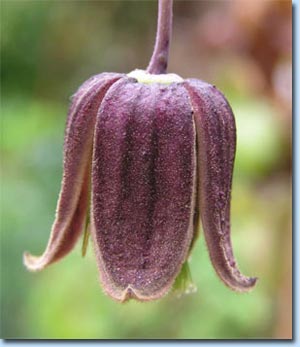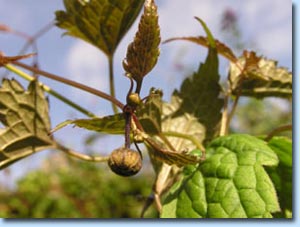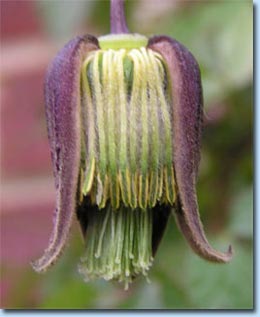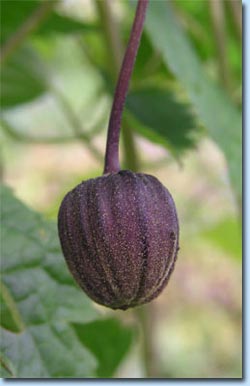|
 This
is a species plant very similar in growth to
its close relatives C. rhederiana and
C. connata. This particular plant was
grown from seed collected by Bleddyn & Sue
Crug in the remote part of the Arun Valley, on
the Tibetan border with North-eastern Nepal at
2800m. He was not absolutely sure when I obtained
the plant from him that it was C.confusa but
we compared the growth to that of a plant he
knew to be correct, plus the seed was obtained
in the same small area that C.confusa was
found to be growing and thankfully it turned
out to be correct. This
is a species plant very similar in growth to
its close relatives C. rhederiana and
C. connata. This particular plant was
grown from seed collected by Bleddyn & Sue
Crug in the remote part of the Arun Valley, on
the Tibetan border with North-eastern Nepal at
2800m. He was not absolutely sure when I obtained
the plant from him that it was C.confusa but
we compared the growth to that of a plant he
knew to be correct, plus the seed was obtained
in the same small area that C.confusa was
found to be growing and thankfully it turned
out to be correct.
Although bought as a two litre plant, the amount of growth was small, but after
planting in a good nutrient rich soil in late July
the plant proceeded to put on 8' or 240 cm of growth in the space of 10 weeks
at which point the flower heads could be seen to be forming at the leaf axils.
 By now it was mid October and the average temperature was dropping and its vigour
was also dropping exponentially. By early November (frosts
not yet appearing on the horizon) the flowers had grown to the size in the last
photo but had not yet started to open. By now it was mid October and the average temperature was dropping and its vigour
was also dropping exponentially. By early November (frosts
not yet appearing on the horizon) the flowers had grown to the size in the last
photo but had not yet started to open.
By
mid November the first frost arrived and I decided to cheat by bringing in one
of the more mature stems and placing it indoors in a sunny position. Within a
few days the buds had opened and after a week of opening I took the flower shots
you can see now.
I would thus have to surmise that its flowering period would be
November-January in cultivation although with its late start in
life I think this could be slightly wrong.
 Hopefully next year it may produce flowers a little nearer to
its flowering period in the wild which is August to October although
our climate I don't think, would bring it into flower as early
as these quoted months. Hopefully next year it may produce flowers a little nearer to
its flowering period in the wild which is August to October although
our climate I don't think, would bring it into flower as early
as these quoted months.
The sepals can be seen to be of a reddish brown to almost chocolate
brown depending on the amount of sun reaching the flower and from
which angle the flower is viewed. The tips of the sepals recurve
to reveal the same outer colour on the inside.
The
filaments are pale yellow turning green towards the top, while
the anthers are yellow with a green connective.
The
grenish white stigma is nearly a third longer than the length of
the stamens and due to the sepals recurving at the tips actually
sticks out ever so slightly longer than the sepal length.
This multi stemmed pruning
group 3 (hard prune) climbing plant bears very coarse trifoliate mid green leaves.
The leaf nodes on this particular species of plant become very large almost disc-like
although I did not see this on this plant but I put that down to its late planting.
I suppose this could only be classed as a collectors plant and unfortunatelythere is no longer a supplier here in the UK.
| Flower
Colour |
- |
The pendant
flowers are reddish-brown to chocolate brown with recurving
tips. |
| Pruning
Group |
- |
Group 3 (Hard prune) |
| Hardiness |
- |
I
believe zone 6 has been quoted for this species although
I find this somewhat dubious and would quote around zone
8-9 as the plant above did not survive the winter where
we only saw -5 deg C although this is not to say that
the slightly damp soil might have killed it off. |
| Height |
- |
15'
or 450 cm |
| Flowering Season |
- |
November-January
(outside, if you're lucky) |
| Aspect |
- |
Warm
Sunny site with shaded base |
| Fragrant |
- |
No |
| Evergreen |
- |
No |
| Other
info |
- |
Distinguished from
its close relatives by its large disc-like leaf axils. |
|









